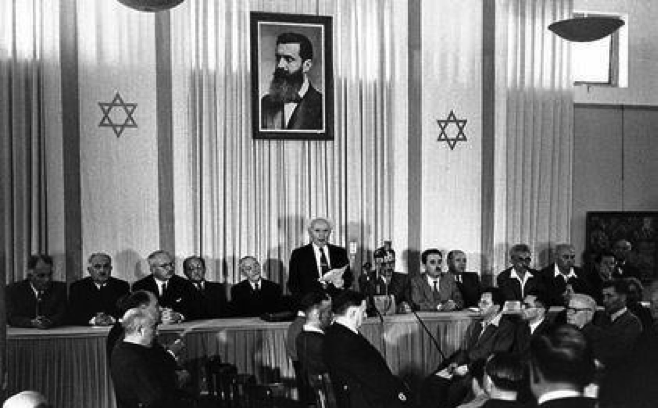
May 14, 1948
On Friday afternoon in the Tel Aviv Museum, David Ben-Gurion, chairman of the Provisional State Council, declares Israel’s independence. The United States is the first country to recognize the new and already besieged state. Arms for Israel come from a variety of sources, including Eastern Europe. Jews in Arab lands find refuge in Israel, while an Arab refugee problem is created as many Arabs flee or are driven out of Palestine. Israel holds private talks with Jordan, Lebanon, and Syria, but no political agreements result. Arab rulers will not allow Palestinians to negotiate with Israeli in public.
The Declaration’s contents are a synopsis of Jewish history to 1948 and a statement of Israel’s intent toward its inhabitants, neighbors, and the international community. It is divided into four parts: 1) a biblical, historical, and international legal case for the existence of a Jewish state in the Land of Israel; 2) the self-evident right of the Jewish people to claim statehood; 3) the actual declaration of statehood; and 4) statements about how the state will operate, including an enumeration of citizen’s rights.
The photo shows David Ben-Gurion reading Israel’s Declaration of Independence on May 14, 1948.
